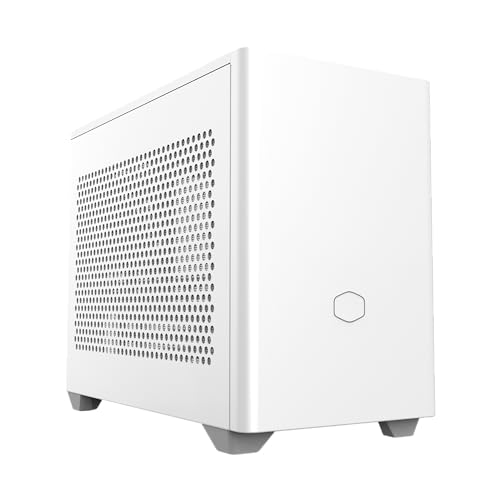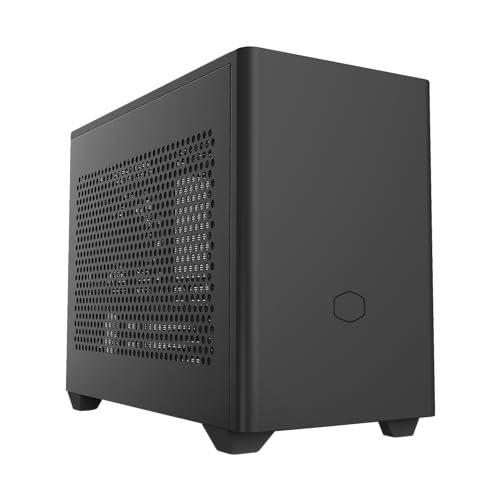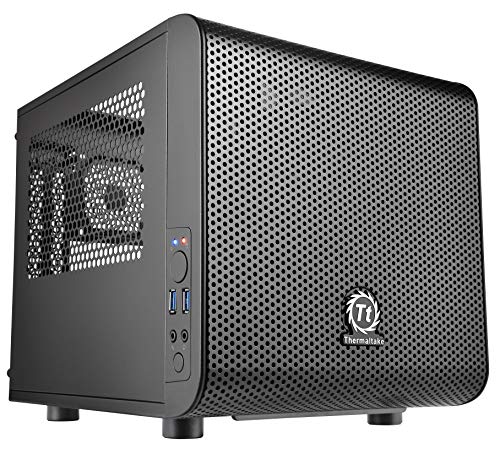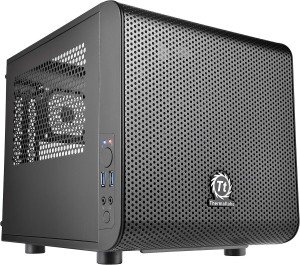Mini‑ITX builds condense power into a small form factor without sacrificing performance. Designing a high‑performance Mini‑ITX PC requires strategic component selection, efficient thermal planning, and exceptional cable management. These systems are ideal for users with limited space but high computing demands.
Focus on low‑profile yet powerful components, such as compact high‑performance GPUs, efficient multi‑core CPUs, and fast DDR memory. Choose a Mini‑ITX motherboard with robust VRM and enough expansion options. Efficient cable routing and compact cooling solutions, such as all‑in‑one (AIO) liquid coolers, are vital to maintain airflow and system stability.
Plan your layout meticulously to avoid congestion. Use modular components and consider vertical GPU mounting if the case supports it. Regularly monitor temperatures during stress tests and adjust fan curves to balance cooling performance with acoustics.
Mini‑ITX high performance PCs deliver powerful computing in a compact package. With careful design, efficient cooling, and thoughtful component choices, you can build a system that meets the demands of gaming, creative tasks, and everyday productivity in minimal space.
Ultimate High-Performance Mini-ITX PC Build Guide
Discover how to build a compact high performance Mini-ITX PC that balances raw power, efficient cooling, and a space-saving form factor without compromise.
Introduction
Mini-ITX PCs condense desktop-grade performance into a small form factor, making them perfect for setups where space is at a premium. Whether you’re a gamer craving silky-smooth frame rates, a content creator editing 4K video, or a professional running intensive simulations, a well-designed Mini-ITX build can deliver. This guide walks you through every detail—from choosing a Mini-ITX motherboard with robust VRMs to mastering cable management and efficient cooling, ensuring your high performance mini PC never breaks a sweat.
Design Considerations and Component Selection
1. Case Selection: The Foundation of a Small Form Factor Build
The right case determines how much room you have for cooling, cable routing, and component clearance. In a space-saving PC, every millimeter counts.
- Support for dual-slot GPUs and 240 mm radiators
- Modular internal brackets for repositioning drives or pumps
- Removable panels and SSD trays to simplify assembly
- Front and side ventilation channels to maximize airflow
2. Mini-ITX Motherboard: Heart of Your Build
A premium Mini-ITX motherboard offers more than just a smaller footprint—it delivers stable power delivery and essential connectivity.
- High-quality VRMs with heatsinks for CPU overclocking headroom
- Dual M.2 slots to minimize cabling and boost storage speeds
- Onboard Wi-Fi 6E and Bluetooth 5.2 for a wireless edge
- Multiple USB-C and USB-A ports to support peripherals
3. CPU Choice: Power vs. Efficiency
Balancing performance and thermal output is key in a compact design. Choose CPUs with strong multi-core performance but moderate TDP ratings.
| Processor | Cores/Threads | TDP | Best For |
|---|---|---|---|
| Intel Core i7-13700K | 16C / 24T | 125 W | High-end gaming & content creation |
| AMD Ryzen 7 7700X | 8C / 16T | 105 W | Streaming & multitasking |
| Intel Core i5-13600K | 14C / 20T | 125 W | Value-oriented performance |
| AMD Ryzen 5 7600X | 6C / 12T | 105 W | Budget-friendly gaming |
4. Graphics Card: Maximizing GPU Throughput
Smaller GPUs with custom shrouds often outperform full-length cards in cramped cases.
- Short PCB, dual-fan designs for improved clearance
- Factory overclocks can be tempered by case thermals—monitor closely
- Consider blower-style coolers if your case has minimal exhaust
5. Memory and Storage Solutions
Efficient cooling zones on memory modules and M.2 SSD placement reduce clutter and improve thermal performance.
- Low-profile DDR5 kits (6000 MHz+) to free up cooler space
- Stackable M.2 SSD heatsinks or integrated motherboard shields
- Optional 2.5″ drive bays for extra storage without sacrificing airflow
6. Power Supply Units for Mini-ITX
SFX and SFX-L PSUs pack robust power into smaller enclosures, enabling high performance mini PC builds.
- 650 W 80+ Gold certified offers a balance of efficiency and headroom
- Modular cables reduce excess clutter inside tight cases
- Ensure adequate 12 VHPWR connectors for the latest GPUs
Efficient Cooling and Airflow Strategies
AIO vs. Air Cooler: Which Wins?
Both cooling solutions have merits in a small form factor, but layout and radiator placement often tip the scales.
| Cooling Type | Pros | Cons |
|---|---|---|
| 120 mm / 240 mm AIO | Superior heat dissipation, sleek look | Radiator fitment can be challenging |
| Low-Profile Air Cooler | No leak risk, easy installation | Limited overclocking potential in cramped space |
Optimizing Airflow Paths
- Intake fans at front/bottom to feed cool air over GPU and VRMs
- Exhaust fans at top/rear to remove hot air quickly
- Maintain positive air pressure to reduce dust accumulation
- Use thin, high-static-pressure fans to squeeze through narrow vents
Fan Curve Tuning
- Log baseline temperatures at idle, load, and stress-test scenarios.
- Create custom fan curves: ramp up to 60% at 60 °C, 80% at 75 °C, and 100% at 85 °C.
- Adjust noise thresholds to match your tolerance—aim for under 40 dB(A) in everyday use.
- Revisit curves every few months to account for dust build-up.
Step-by-Step Assembly Guide
Building a space-saving PC demands precision. Follow these steps to avoid reworks and ensure clean cable management.
1. Pre-Assembly Planning
- Lay out all components and cables on a clean surface.
- Verify motherboard standoff positions and remove extraneous screws.
- Consult your case manual for radiator/fan mounting options.
2. CPU and Cooler Preparation
- Install CPU into socket, locking the lever.
- Apply a pea-sized drop of thermal paste or use pre-applied paste.
- Mount cooler or AIO pump head, ensuring even pressure.
3. Memory and M.2 SSD Installation
- Seat low-profile DDR modules at alternating slots for dual-channel operation.
- Insert M.2 SSD(s) at a shallow angle, then secure with a screw or heatsink clip.
4. Motherboard to Case
Gently lower the board into the chassis, aligning I/O ports and standoffs. Screw it down snugly but do not overtighten.
5. PSU, GPU, and Cable Routing
- Mount SFX PSU in its compartment—orient fan down or to a vent.
- Connect 24-pin, CPU 8-pin, and GPU power cables first.
- Use the rear cable channels and Velcro straps to keep cables flat.
- Connect front-panel USB, audio, and power switches last to avoid tangles.
6. Final Checks and First Boot
- Verify all power connectors are fully seated.
- Inspect for loose screws or stray cables near fans.
- Power on and enter BIOS/UEFI to confirm component recognition and temperature readings.
BIOS Tuning, Stress Testing, and Maintenance
BIOS/UEFI Configuration
- Enable XMP/EXPO profiles for optimal memory speed.
- Disable onboard audio or network controllers if unused to free PCIe lanes.
- Update firmware for motherboard, CPU microcode, and AIO pump control.
Stress Testing & Stability Checks
- Run CPU stress tools (Prime95, Cinebench R23) and GPU benchmarks (3DMark, Unigine Superposition).
- Monitor thermals with HWInfo or CAM for at least one hour.
- Adjust voltages and fan curves if temperatures exceed safe limits.
Routine Maintenance
- Dust filters: clean monthly to maintain airflow.
- Reapply thermal paste every 2–3 years or if temperatures drift upward.
- Inspect fans for bearing noise and replace as needed.
Who Benefits from High-Performance Mini-ITX PCs?
Small form factor enthusiasts range from LAN party warriors to home theater aficionados. Here’s where a compact design shines:
- Streamer and content creators: powerful enough for 4K editing in a minimalist setup.
- VR and simulation: portability for demos and events.
- Tiny home servers: discreet yet robust for media streaming and backups.
- Office powerhouses: fit under monitors or tuck behind desks for clean workspaces.
Conclusion
A high performance mini PC is not just about shrinking a desktop—it’s an exercise in judicious component selection, airflow optimization, and thoughtful assembly. By leveraging low-profile components, robust Mini-ITX motherboards, and efficient cooling solutions, you can achieve desktop-class power in a space-saving chassis. Whether gaming, creating, or crunching data, your compact high performance build will prove that great things truly do come in small packages.







